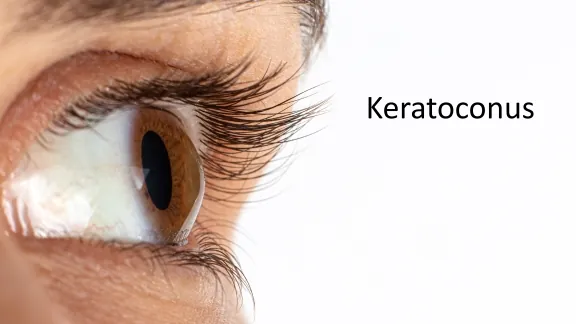
Revolutionary Breakthrough in Treating Keratoconus: A Game Changer for Eye Health!
2024-11-19
Author: Siti
Groundbreaking Treatment Unveiled in Shanghai
In an exciting development for eye health, medical experts in Shanghai have unveiled a groundbreaking treatment for keratoconus, a severe eye disorder affecting thousands globally. This innovative approach promises more precise and effective outcomes, a significant leap forward in the battle against this debilitating condition.
Understanding Keratoconus
Keratoconus is a progressive disorder characterized by the thinning of the cornea, which gradually bulges outward, resembling a cone. Patients often experience blurred vision, heightened sensitivity to light, and glare – symptoms that can severely impact daily life. Typically manifesting in late adolescence, keratoconus can advance over a span of 10 years or more, potentially leading to irreversible blindness. Alarmingly, this condition accounts for 10 to 20 percent of all corneal transplants.
Traditional Treatment: Corneal Cross-linking (CXL)
Traditionally, the primary treatment option for patients has been Corneal Cross-linking (CXL), a procedure designed to slow or halt the progression of keratoconus. CXL involves the application of riboflavin to reinforce the cornea, potentially reducing the likelihood of requiring a transplant in the future.
A New Approach Using Microneedles
However, there’s a new twist in the tale! Researchers from Fudan University's Eye, Ear, Nose and Throat Hospital have taken CXL to the next level by exploring the use of microneedles to administer riboflavin before the procedure. Unlike conventional treatment methods that often adopt a 'one-size-fits-all' strategy, this innovative research resulted in the design of four unique microneedle systems tailored to each patient's specific condition, ensuring precise and individualized riboflavin delivery.
Recognition and Future Potential
This revolutionary practice is being hailed as a major breakthrough in the treatment of keratoconus. In recognition of their pioneering work, a paper authored by the Fudan team has been published in the prestigious journal Advanced Materials, even earning a coveted spot on its cover.
Looking Forward
As the world watches this development unfold, experts believe it could fundamentally change the landscape of keratoconus treatment, offering hope to countless individuals battling this increasingly prevalent eye disorder. Stay tuned for what may be the dawn of a new era in ocular health!




 Brasil (PT)
Brasil (PT)
 Canada (EN)
Canada (EN)
 Chile (ES)
Chile (ES)
 España (ES)
España (ES)
 France (FR)
France (FR)
 Hong Kong (EN)
Hong Kong (EN)
 Italia (IT)
Italia (IT)
 日本 (JA)
日本 (JA)
 Magyarország (HU)
Magyarország (HU)
 Norge (NO)
Norge (NO)
 Polska (PL)
Polska (PL)
 Schweiz (DE)
Schweiz (DE)
 Singapore (EN)
Singapore (EN)
 Sverige (SV)
Sverige (SV)
 Suomi (FI)
Suomi (FI)
 Türkiye (TR)
Türkiye (TR)